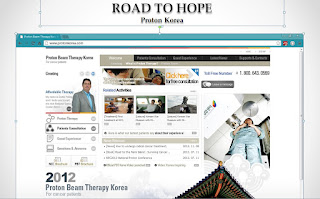NCC celebrates 11 years of proton therapy saving patients
The National Cancer Center said it has reaped meaningful results in proton therapy to treat cancer during the past 11 years, after introducing it to Korea for the first time in 2007.
Due to the high cost of operating the proton therapy machine, the state-run hospital has been providing the proton treatment only for patients with the right indications.
NCC also provides a program to help low-income cancer patients receive the proton therapy for free, which is almost impossible to do for private medical institutions.
Proton therapy good in liver, pancreatic, eye, lung cancer
NCC held a press conference at Goyang Aram Nuri in Goyang, Gyeonggi Province, on Friday to promote the proton therapy’s clinical effectiveness. The hospital also held an international symposium on “Clinical Evidence in Particle Therapy & Current Status of Particle Therapy in Asia-Oceania” at the NCC’s cancer prevention and examination center in Goyang on Friday and Saturday.
The proton therapy was effective particularly for radiation-treated but recurrent cancers such as spinal cord chordoma and head and neck cancer, NCC said.
“The proton therapy showed an excellent therapeutic effect in liver cancer and pancreatic carcinoma with low survival rate,” said Kim Tae-hyeon, head of the NCC’s proton therapy center. “In patients with liver cancer, patients who could not have surgery due to poor liver function with smaller than 8-centimeter tumor showed more than 90 percent of complete remission rate within one year. Their three-year survival rate was 74 percent.”
Kim went on to say that a patient with locally advanced hepatocellular carcinoma who accompanied tumor thrombosis with a poor prognosis had a remarkable treatment result with the two-year survival rate exceeding 50 percent, in combination with other therapies.
“In a pancreatic cancer patient who could not undergo surgery, the proton therapy showed a similar treatment result with those who had surgical resections,” Kim added.
The proton treatment is also effective on eye cancer, as most other surgeries require the removal of the eyeball. The proton treatment precisely targets cancer cells only, preserving the eyeball and the sight.
“In choroidal melanoma, the most common type of eye cancer, patients had a 95 percent local tumor control rate and a 100 percent three-year survival rate after the proton therapy,” said Moon Seong-ho, a specialist at the NCC’s proton therapy center.
Another physician Seo Yang-kwon at the center said first-stage lung cancer patients who could not have surgery had an 85.4 percent three-year local tumor control rate after the proton therapy. Those whose tumors were smaller than 3 centimeters had a 94 percent rate.
“Patients in stage-1 esophageal cancer had a 90 percent local tumor control after the proton treatment, too,” he added.
NCC said it planned to update the proton therapy machine, which is more than 10 years old and purchase the newest equipment. The hospital has not been able to do so due to budget issues.
“NCC has grown to become an internationally-recognized hospital during the past 11 years since it adopted the proton therapy, called ‘a magic bullet for cancer patients,’ for the first time in Korea,” NCC president Lee Eun-sook said. “We will continue to enhance our proton therapy capability through international exchanges of information and cooperation.”
|



Glizid 80mg Tablet is utilized in a specific type of diabetes in grown-ups, when diet, exercise, and weight reduction alone don't adequately affect keeping glucose at the right level.
ReplyDelete